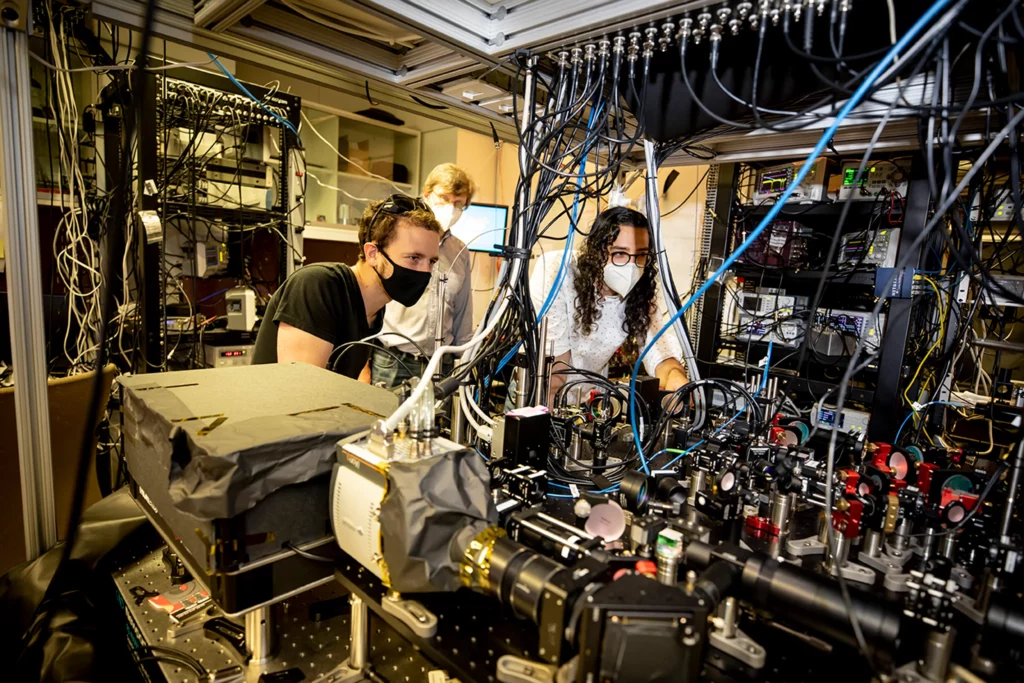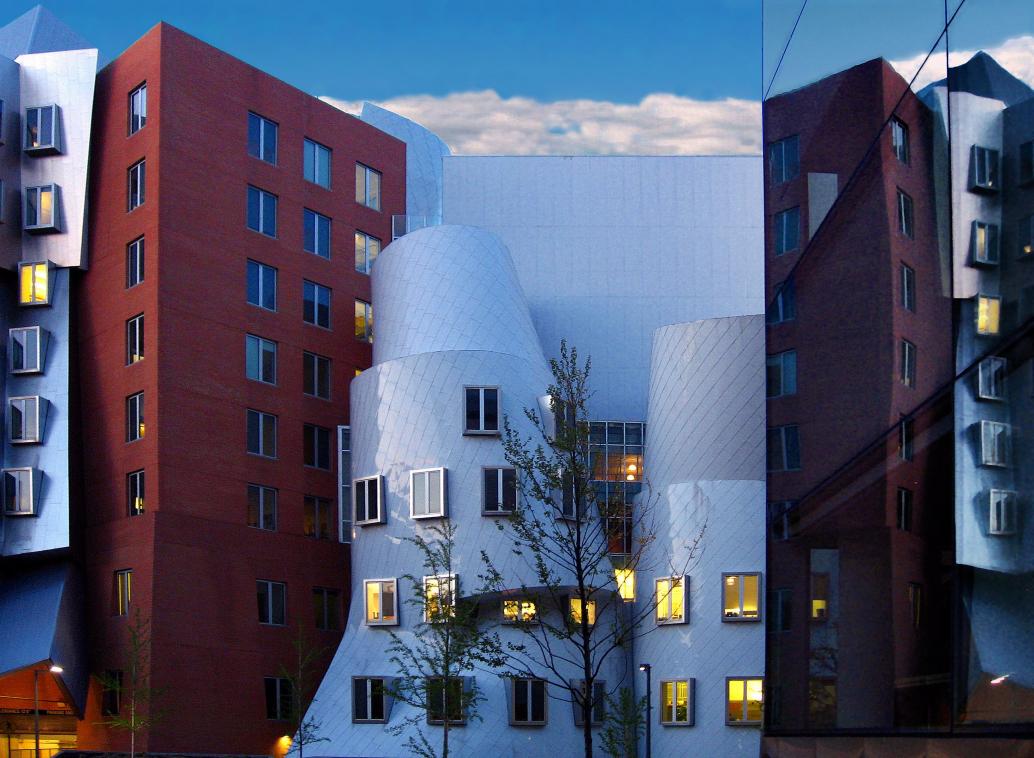In 2017, Harvard University achieved a significant breakthrough in quantum computing, overcoming key challenges like quantum decoherence and qubit instability. This advancement not only highlighted Harvard’s role in pushing the boundaries of knowledge but also signaled a major step forward in the evolution of computing and theoretical physics.
Facing the complex problems of quantum mechanics, the team’s work offered a promising outlook for quantum computing to address issues beyond the capability of classical computing systems. The breakthrough was the fruit of an extraordinary collaboration between a diverse team of physicists and computer scientists. This team of brilliant minds was led by a group of leading figures whose vision and dedication propelled the research to new heights. Leading the charge in this quantum computing endeavor were preeminent physicists like Professor John Martinis, known for his phenomenal work in quantum circuits, and theoretical physicist Dr. Scott Aaronson, whose insights into quantum algorithms have shaped the field. Their profound grasp of quantum mechanics and a steadfast commitment to innovation provided the project’s scientific bedrock. Collaborating closely were computer scientists of the caliber of Dr. Umesh Vazirani, a luminary in quantum computation theory, and Dr. Jennifer Chayes, renowned for her contributions to algorithmic design, who applied their deep knowledge in algorithms, computational theory, and system design to bring theoretical concepts to fruition. This interplay between physics and computer science was crucial, facilitating a comprehensive approach to the quantum computing challenges.
The project also benefited from the involvement of notable academics such as Charles Bennett, a remarkable Professor in quantum cryptography, and young innovators like Dr. Krysta Svore, who specializes in quantum software architecture. Their collective expertise spanned the gamut from foundational quantum mechanics to practical computing applications, creating an innovative environment. Doctoral students, embodying the bridge between cutting-edge academic research and tangible technological solutions, played a key role, highlighting the team’s dedication to a collaborative space where diverse contributions and organization were valued and encouraged.
This collective effort was an interdisciplinary collaboration for quantum computing that transcended any single field of study. The team’s backgrounds in physics, computer science, engineering, and even mathematics enriched their approach, allowing them to draw on a wide array of theories, techniques, perspectives and teamwork.

The genesis of the thought experiment that led to this quantum computing breakthrough can be traced back to two of the most daunting challenges in the field: quantum decoherence and qubit stability. Quantum decoherence, the process by which a quantum system loses its quantum properties due to interaction with its environment, and the related issue of maintaining qubit stability, are significant obstacles that have long impeded progress towards practical quantum computing. The susceptibility of qubits to error from even minimal environmental interference has historically limited the scalability and reliability of quantum computing systems.
The thought experiment began with a simple yet profound question: Could the principles of quantum mechanics itself offer a solution to the problem of decoherence and qubit instability? This question led the team to explore novel concepts in quantum physics, including entanglement and superposition to conceive of a system where qubits could remain coherent for longer periods and maintain their quantum states even in the face of external disturbances.
The envisioned model proposed leveraging entangled states in such a way that the entire system could exhibit a form of “quantum resilience” against decoherence. By intricately designing the interactions between qubits, the team hypothesized that it would be possible to create a feedback mechanism where the quantum state of one qubit could help stabilize another. This concept also included innovative error correction techniques that were integrated into the very fabric of the quantum computing architecture, rather than being appended as an afterthought.

Theoretical models and simulations played an indispensable role in this process. By utilizing advanced simulations, the team was able to predict the behavior of their quantum system under various conditions, refine their models, and iterate their designs with an efficiency that physical experimentation alone could not match. These simulations were crucial in identifying optimal configurations of qubits and entanglement patterns that maximized error resistance and computational stability.
Another critical aspect of the thought experiment was the realization that for quantum computing to be truly scalable and practical, the architecture needed to be designed not just for ideal laboratory conditions, but for unpredictable scenarios. This realization prompted the team to consider not only the theoretical aspects of quantum mechanics but also the practicalities of engineering and materials science in their design.
Upon success, this quantum computing breakthrough achieved by the Harvard team represented a monumental stride in overcoming the longstanding hurdles of quantum decoherence and qubit instability. Central to this achievement was the development of a new quantum computing model that ingeniously addresses these challenges. This model, characterized by its innovative approach to quantum architecture, introduced a novel method of leveraging quantum mechanics principles to create a more stable and error-resistant computing environment. At the heart of this breakthrough was the conceptualization and implementation of a quantum system that could inherently guard against decoherence through a unique entanglement-based framework.
The practical applications of this new model were promptly demonstrated through a series of experiments that showcased its viability. These included simulations of complex quantum algorithms that could now be executed with greater accuracy and efficiency. Moreover, the Harvard team’s approach allowed for scalability, a critical achievement that had eluded researchers due to the exponential increase in error correction complexity with the addition of more qubits.
The immediate impact of Harvard’s breakthrough on the field of quantum computing was profound. It not only provided a tangible solution to some of the most critical challenges in quantum computing, but also opened up new avenues for research and development. Potential applications of this technology are vast and varied, ranging from cryptography, where quantum computing could render traditional encryption methods obsolete, to drug discovery, by significantly accelerating the simulation of molecular interactions. Furthermore, the ability to simulate complex systems with unprecedented precision could transform fields such as climate science, economics, and materials science.
The long-term implications of this breakthrough extend even further, potentially revolutionizing both technology and science by offering a viable pathway to scalable quantum computing for the next generation of computing power, capable of tackling problems that are currently infeasible. It also promises to deepen our understanding of quantum mechanics by providing a platform for testing and exploring quantum theories in new ways.
This breakthrough not only challenges existing theories, but also provides a new lens through which to view the quantum world, potentially leading to novel insights and discoveries in quantum mechanics, entanglement, and beyond.
Harvard’s quantum computing breakthrough is not just a milestone in the field of quantum computing, it is a testament to the transformative power of interdisciplinary research, collaboration at the highest level with a core of innovation. We must pursue a future where the boundaries of computing and theoretical physics are expanded, opening new horizons for science, technology and beyond.






